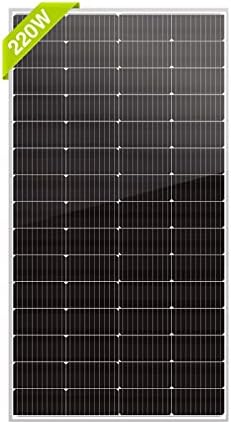# Comparing Solar Panels: Finding the Best Fit for Your Home
The sun rose over my remote getaway, casting warm rays across my humble plot of land. I watched as the golden light hit my solar panels, transforming rays into energy that powered my home and kept my fridge buzzing with life. Choosing the right solar panel system was a journey filled with research, excitement, and a few trials and tribulations, but today, I want to share that journey with you in an upbeat and engaging way. If you’re ready to step into the world of solar energy, buckle up as we compare different solar options and help you find the perfect fit for your residence!
## Understanding Your Energy Needs
Before we dive into the world of solar panels, it’s essential to understand your unique energy needs. Are you living in a modest home that consumes a minimal amount of energy, or do you have a spacious household filled with gadgets and appliances? By determining your average energy consumption, you can make an informed decision about the size and type of solar system that will serve you best.
### Calculate Your Energy Usage
Start by examining your electricity bills over the past year. Write down your monthly energy usage in kilowatt-hours (kWh). This figure will give you a baseline to work with as you explore solar panel options.
Additionally, consider the types of energy-consuming devices you use:
– **Essential appliances**: Refrigerator, heating and cooling systems, laundry machines.
– **Non-essential items**: Computers, gaming consoles, entertainment systems.
Understanding how much energy you consume will set the stage for finding a solar system that meets your needs perfectly.
## Types of Solar Panels: The Breakdown
Solar technology has advanced tremendously over the past few years, and you now have a variety of solar panels to choose from. Here’s a rundown of the most common options:
### 1. Monocrystalline Solar Panels
Monocrystalline panels are manufactured from a single crystal structure, which gives them a sleek, aesthetic look. Here’s what you need to know:
– **Efficiency**: These panels generally have the highest efficiency ratings (15-22%), making them a fantastic choice if you’re limited on roof space.
– **Longevity**: With a lifespan of around 25 years, these panels represent a long-term investment.
– **Cost**: They’re generally more expensive upfront but often provide a better return on investment (ROI) in the long run.
### 2. Polycrystalline Solar Panels
Polycrystalline panels are made from multiple silicon crystals melted together. They are often less expensive but come with their pros and cons:
– **Efficiency**: Efficiency rates hover between 13-16%, which means you might need more of these panels to meet your energy needs.
– **Lifespan**: While they typically last about 25 years, polycrystalline panels may not perform as well in extreme heat.
– **Cost**: More budget-friendly upfront, making them an attractive option for those looking to save initially.
### 3. Thin-Film Solar Panels
Thin-film panels are lightweight and flexible, often seen in smaller applications or unique installations. Here’s the scoop:
– **Efficiency**: The efficiency of thin-film panels ranges from 10-12%, which means they take up more space for the same energy output.
– **Versatility**: They can be installed on uneven surfaces, expanding installation possibilities.
– **Cost**: Typically the least expensive option upfront, but their lower efficiency can lead to higher long-term costs.
### 4. Bifacial Solar Panels
Bifacial solar panels are a more innovative choice, capturing sunlight from both sides. Here’s why they might be right for you:
– **Efficiency**: These panels can offer increased efficiency due to reflected light, potentially producing 10-20% more energy.
– **Longevity**: Like monocrystalline panels, bifacial panels generally have long lifespans, often exceeding 25 years.
– **Cost**: They may come with a higher initial cost, but their increased output can justify this investment.
## Key Considerations When Choosing Solar Panels
As you navigate through the various types of solar panels, keep these essential factors in mind:
### Energy Efficiency
Efficiency is paramount. Higher-efficiency panels mean more energy production, allowing you to maximize the benefits of your solar system.
### Rooftop Space
Evaluate your rooftop space carefully. If you have limited installation space, you may want to lean towards the higher-efficiency monocrystalline panels.
### Aesthetics
How much do aesthetics matter to you? While performance is critical, the look of the panels can also play a role in your decision, especially if your roof is visible from the street.
### Budget
Consider your budget carefully. While higher-quality panels may cost more upfront, their longevity and efficiency could lead to savings in the long run.
### Installation
Don’t forget to factor in installation costs. Be sure to work with a reputable solar installer who can provide a professional assessment tailored to your specific circumstances.
## Going Beyond the Panels: Additional Components
While solar panels are the star of the show, don’t forget about the supporting players in your solar energy system:
### Inverters
**Inverters** are essential for converting the direct current (DC) electricity generated by solar panels into alternating current (AC) electricity that can power your home. Consider whether you prefer:
– **String inverters**: Commonly used and cost-effective, but come with limitations if one panel goes down.
– **Microinverters**: Placed on each panel, allowing for more efficiency and performance monitoring but can increase overall system costs.
### Batteries
If you want to maximize your independence, investing in **battery storage** is essential. Batteries store excess solar energy for later use, allowing you to rely on solar power even when the sun doesn’t shine.
### Monitoring Systems
Invest in a monitoring system to keep track of your solar energy production. This data can help you optimize your energy consumption and ensure your system is performing optimally.
## Pro Tips for Choosing the Right Solar Panels
1. **Prioritize Quality Over Price**: While it can be tempting to go for the cheapest option, remember that solar panels are a long-term investment. Look for panels with good warranties and proven performance.
2. **Research Incentives**: Check local and federal incentives or tax credits that can help offset the costs of your solar installation.
3. **Consult Multiple Installers**: Don’t settle for the first quote you receive. Gathering multiple opinions and options will help you find the ideal solution for your home.
4. **Plan for the Future**: Consider your future energy needs. If you anticipate adding more appliances or expanding your living space, factor in those potential changes now.
5. **Understand Maintenance**: Most solar panels require minimal maintenance, but it’s wise to know what’s involved. Regular cleaning and periodic checks can help maintain performance.
## Conclusion: Let the Sunshine In
Navigating the world of solar panels can seem daunting, but with the right information at your fingertips, you’re well-equipped to make an informed choice. By understanding your energy needs, comparing the different types of solar panels, and considering related components, you can find the best solar solution for your home. So go ahead—embrace the sun, reduce your carbon footprint, and make the leap into solar energy today! Your future self will thank you for it.



